Since the Greek economic crisis came into the global spotlight, Greece has been portrayed as a country that produces nothing. When talking to people who live outside Greece (both Greeks and non-Greeks), once they tell me how corrupt and unfair my country is, they then go on to tell me how unproductive and uncreative it is. These are the same people that look out for imported Dodoni feta cheese and Pelion olives on the shelves of their non-Greek supermarket refrigerators. As my kids say: "Πίου, πίου", whose meaning I don't really know, but which I surmise to mean something like "You don't know what you're talking about", since they always make a rolling motion with one of their fingers near their head when they say this to each other.
It's always a nice surprise to see a much-loved world-renowned Greek product being used in a non-Greek recipe by a non-Greek cook. The first chapter in Elizabeth Bard's Lunch in Paris: A Love Story, with Recipes contains a recipe using just three easy-to-source ingredients: biscuits, tinned fruit and Greek yoghurt. When Greek yoghurt is called for in a recipe, it always refers to thick yoghurt (thick enough to stand a spoon in it) that isn't runny because it's been strained of most of its liquids. It's no surprise to see that food is what Greece is known for (apart from good summer holiday weather) outside of Greece: Greeks have always been known to share their good food.
Charlotte made with P'tit Beurre Papadopoulou biscuits
Elizabeth probably used the FAGE yoghurt brand (beware of imitations!) to make the dessert (under the name TOTAL) because this brand of yoghurt is exported to all parts of the world (and is now even being made in a US factory). I've adapted Elizabeth's recipe just slightly (see my previous post), making it in both a medium-sized mould and portion-sized ramekins. I substituted the non-Greek products in her recipe with two well-known Greek ones that are also imported into Western countries: PAPADOPOULOU biscuits and SKO canned fruits. All these products have become popular outside Greece because they are associated with high quality comestibles and transparent food items - none of them contain any E numbers.
Elizabeth's simple dessert recipe (she calls it a 'student charlotte') is a breeze to assemble; even a child can do this (mine did, in fact!), and the impressive outcome makes you look like a French pastry chef. This dessert can be made in ramekins or in a large mould, according to your preference.
You need:
1 500g can of SKO canned fruits (of your choice; peaches are definitely the tastiest)
1 packet of PAPADOPOULOS Miranda or P'tit Beurre biscuits (Miranda are better than P'tit Beurre, because they are smaller and will fit into a small mould without needing to break them, like P'tit Beurre)
1 500g tub of FAGE yoghurt
Method:
Line a large mould or individual ramekins with some saran wrap around the sides. Take some Miranda or P'tit Beurre PAPADOPOULOU biscuits and line them up, side by side, so that they stick to the saran wrap, on the sides of the mould/ramekins. You can dab them with a blot of yoghurt to ensure this. Now place enough biscuits on the bottom of the mould/ramekins to cover it (you may need to break them to make them fit securely). Spoon a layer of FAGE yoghurt over the biscuit layer. Now place some drained SKO fruit chunks on top of the yoghurt. Repeat this process with the PAPADOPOULOS biscuits, FAGE yoghurt and SKO fruit, until no more layers fit. Top with a final layer of PAPADOPOULOS biscuits. Finally, pour some of the syrup from the SKO fruit over the top layer and down the sides of the mould/ramekins. Cover the dessert with a layer of saran wrap. Place the dessert in the fridge and allow to set (for at least 2 hours).
When ready to serve, tip the mould/ramekins onto an appropriate serving dish (a large platter for the mould, or individual plates for the ramekins).
Charlotte made with Miranda Papadopoulou biscuits; these go soft more quickly than P'tit Beurre, so add less syrup.
*** *** ***
The next time you go food shopping, take a look round the shelves of Middle Eastern stores, Greek food supplies and even your local supermarket. You're bound to find some Greek food on the shelves; even Christchurch, New Zealand, a city not at all known for its Greek community stocks Greek food on the shelves of its shops. A caveat: Greek food won't necessarily be labelled as a Greek product; you can verify this by checking the labels and fine print on bottles of olive oil that are labelled as 'products of Italy'. Nearly all mass-produced olive oil exported from Italy contains Greek olive oil.If you've never tried Greek yoghurt before, Fage USA offers a 0.50 cent online coupon that you can print out and use, but only in the US: the Greek site offers competitions with prizes on a seasonal basis.
©All Rights Reserved/Organically cooked. No part of this blog may be reproduced and/or copied by any means without prior consent from Maria Verivaki.
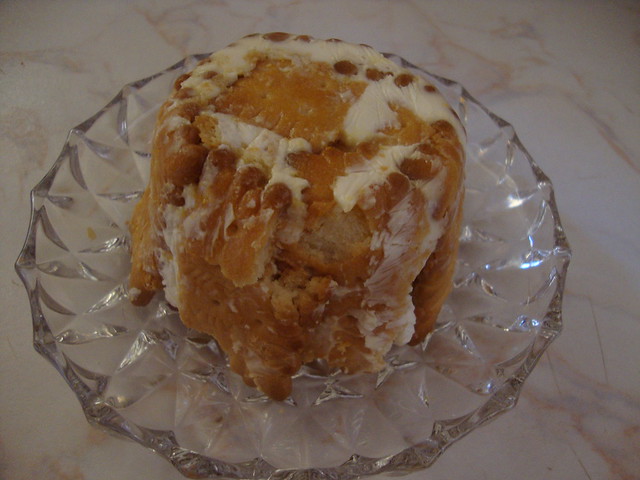
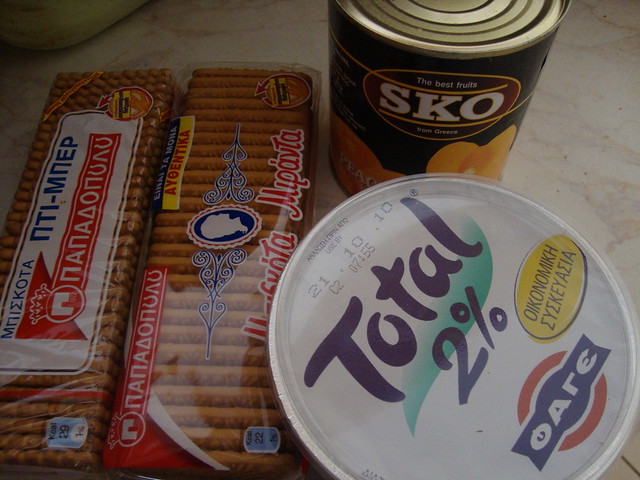
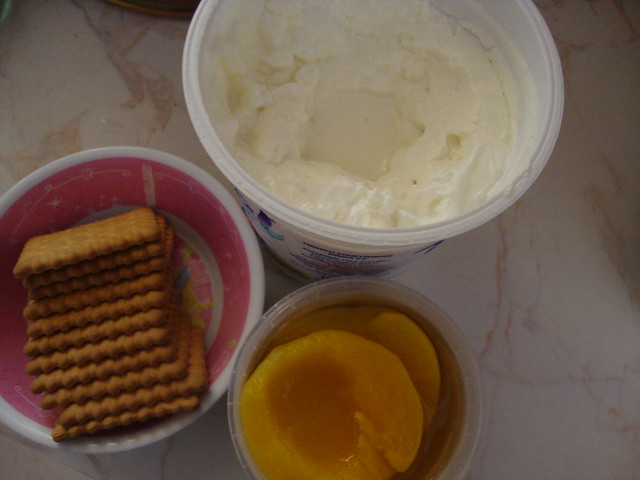
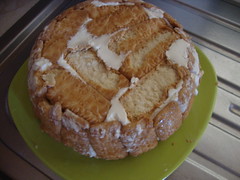
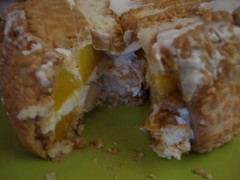
Congratulations to the winner Maria. A charlotte is not something I have tried to make in my kitchen as yet, but I have Greek yogurt and canned peaches so with this twist you never know.
ReplyDeletevoila - opa - it's all good! Glad you and the kids had fun with this one. I'd take home an entire Greek island, if only it would fit in the fridge...
ReplyDeleteThey sell Total yogurts here in Slovenia, too - and I love them. If only they weren't so pricey. My favorite is their sheep's milk yogurt. :) Whenever I happen to buy it, I serve it for dessert with a spoon of honey. So good!!
ReplyDeleteThis charlotte recipe sounds really yummy, I'm bookmarking it!
I actually made a charlotte early this summer before going to Greece and used Greek yogurt in the filling as well. Your versions sound delicious. I truly enjoy desserts like these.
ReplyDeleteWhen I was in Greece a couple of weeks ago I was surprised to read on the FAGE TOTAL yogurt tub that the yogurt was 100% German cow milk. So what is Greek yogurt then? Perhaps we are better off calling it strained yogurt.
ReplyDeletethat's not far from the truth - FAGE makes yoghurt with both greek and german milk, and you always have to read the labelling if you want your yoghurt to be from a greek cow
ReplyDeleteOLYMPUS dairy company produces 100% greek milk-products
I love the Charlotte a la greque, especially using the greque yogurt, your recipe sound amazing I will try it for sure.
ReplyDeletechicago metallic bakeware